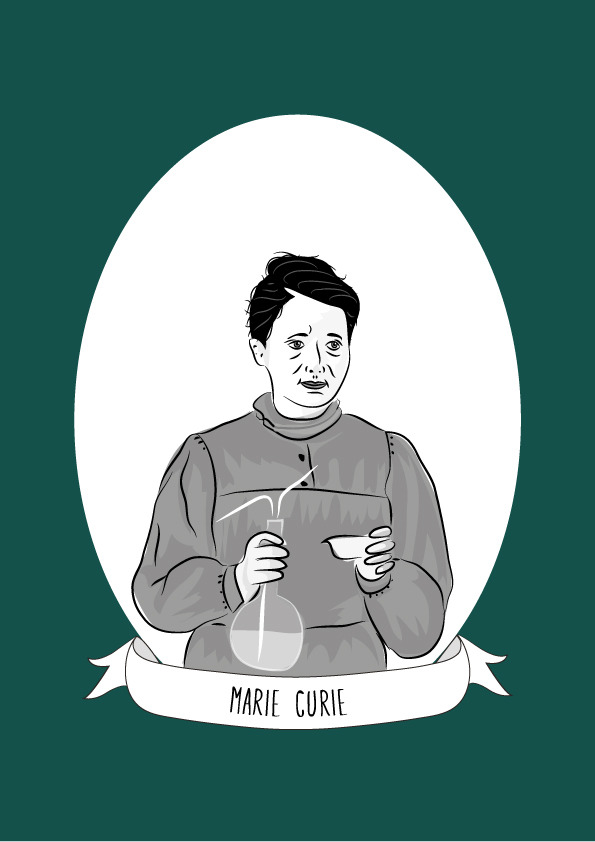Marie Skłodowska-Curie was a Polish and naturalised-French physicist and chemist who conducted pioneering research into radioactivity.
Marie Skłodowska was a top student in her her secondary school, but was unable to attend Warsaw University as it was men-only. She attended the “floating university,” a set of underground, informal classes held in secret. She could not afford to go abroad and pay for additional schooling to earn a degree so worked as a tutor and a governess while continuing her studies in physics, chemistry and maths independently. In 1891, she finally enrolled at the Sorbonne in Paris and in 1893 she completed a Masters degree in Physics, the year after she completed a degree in Mathematics.
Marie Skłodowska met Pierre Curie who was also a scientist. They married in 1859. Marie Curie began her scientific career researching the work of Henri Becquerel, a French physicist who discovered that uranium casts off rays. Through her work she found that the rays remained constant, regardless of the condition or form of the uranium. The rays, she theorized, came from the element’s atomic structure. This revolutionary idea created the field of atomic physics and Curie herself coined the word radioactivity to describe the phenomena.
Curie began to work with her husband and together they discovered a new radioactive element which they named the element polonium, after her native country of Poland. Marie Curie made history in 1903 when she became the first woman to receive the Nobel Prize in physics. She also won a the Nobel Prize in Chemistry in 1911. She is the only woman to win the prize twice.
Her achievements include the theory of radioactivity, techniques for isolating radioactive isotopes and the discovery of two elements, polonium and radium. She spearheaded the world’s first studies into the treatment of neoplasms, using radioactive isotopes. She also founded the Curie Institutes in Paris and in Warsaw, which remain major centres of medical research today and during World War I, she established the first military field radiological centres. She was also the first woman to become a professor at the University of Paris.
